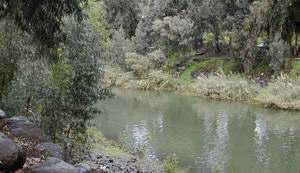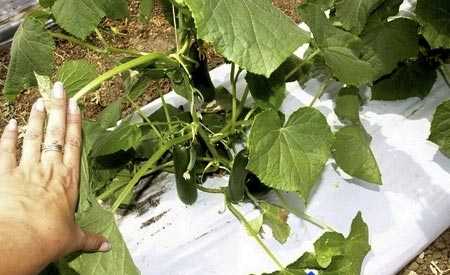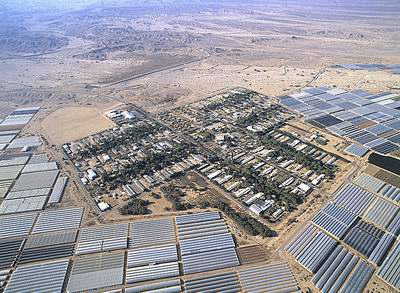Instead of a preface.
 Especially for you, a series of articles on Israeli agriculture in Russian. Our authors are people who are well aware not only of the state of affairs in Israeli agriculture, but also of global agricultural problems. We hope that in these articles you will find not only useful information, but also simply enjoy reading about how a shortage of products turns into abundance, and the problem of where and how to buy into the problem of where and how to sell. You will learn about technologies that allowed a country with limited resources and extreme natural and climatic conditions for agriculture not only to provide its population with food, but also to become a major exporter of agricultural products.
Especially for you, a series of articles on Israeli agriculture in Russian. Our authors are people who are well aware not only of the state of affairs in Israeli agriculture, but also of global agricultural problems. We hope that in these articles you will find not only useful information, but also simply enjoy reading about how a shortage of products turns into abundance, and the problem of where and how to buy into the problem of where and how to sell. You will learn about technologies that allowed a country with limited resources and extreme natural and climatic conditions for agriculture not only to provide its population with food, but also to become a major exporter of agricultural products.
In different countries, the problem of how to produce without a loss and how to sell at a profit exists, but such problems can only be solved through the development of farming and modern high-tech production. It is necessary to grow our own personnel, literate and educated people who know how to apply modern knowledge, progressive technologies, market laws and marketing in practice. The goal of our project is to help with this.
I address these articles primarily to you, my dear friends and colleagues - Russian farmers. Since 1986, in Russia I first had an agricultural cooperative, then a farm, so I fully experienced the needs and concerns, joys and sorrows of Russian farmers. Now I live in Israel and have been working in agriculture for over 20 years.
 I was able to see and learn a lot, meet colleagues, Israeli farmers, kibbutzniks and moshavniks, people involved in servicing the agro-complex, manufacturers and suppliers of agricultural equipment and machinery, scientists and developers of new technologies and equipment, seed growers, producers and suppliers of seedlings and planting material and many other competent people. I hope that this information will be not only interesting for you, but also useful, because much of what is in Israel can, or rather should be applied in all countries of the world.
I was able to see and learn a lot, meet colleagues, Israeli farmers, kibbutzniks and moshavniks, people involved in servicing the agro-complex, manufacturers and suppliers of agricultural equipment and machinery, scientists and developers of new technologies and equipment, seed growers, producers and suppliers of seedlings and planting material and many other competent people. I hope that this information will be not only interesting for you, but also useful, because much of what is in Israel can, or rather should be applied in all countries of the world.
I consider it my duty to share the knowledge and experience gained here, and the company AGROSHERIFF Ltd., which I created and have headed since 1999, will help interested agricultural producers obtain and apply in their fields and plots not only modern knowledge, but also the necessary materials and equipment to equip their farms.
Agriculture in Israel. A little history and modernity.
In May 2004, the State of Israel turned 56 years old. During this short historical period, a fairly high standard and quality of life was achieved, the Israeli shekel became a convertible currency, the country's population over these years increased from 550 thousand to 5.5 million. The country managed to achieve not only food independence, but also to become one of the world's leading exporters of agricultural products and modern innovative agricultural technologies.
Agriculture had to be developed practically from scratch, and in very difficult natural and climatic conditions: more than 50% of the country's territory is located in the semi-arid zone, that is, in the desert, and the amount of precipitation on average is 50-200 millimeters per year, and this rain falls only in winter.
In the late forties, early fifties, the country faced a critical food situation. The country's population was constantly growing, and the unstable political situation, economic blockade and constant military threat from neighboring Arab countries forced the Israeli government to introduce an "austerity regime" in the country in April 1949, or simply a rationing system, which lasted until the 1960s.
Technologies
The use of traditional technologies did not allow the state to provide the necessary amount of food, and the country faced the problem of how to get out of this situation? The extensive path of development was unacceptable due to the limited territory and resources. There was only one way out - to develop intensive agriculture. This was achieved thanks to selfless work and enthusiasm, in the most difficult conditions, developing abandoned lands that had not been cultivated for centuries, inventing and applying the most advanced and progressive technologies, in conditions of a lack of financial and material resources. A great contribution to the development was made by scientists who developed cheap and effective irrigation technologies, which made it possible, despite severe water shortages, to irrigate lands and obtain several harvests a year, regardless of the vagaries of nature. New varieties of plants and highly productive breeds of cattle appeared. Systems began to be produced drip irrigation, new lightweight and durable greenhouse designs.
Breeding
Breeders have developed breeds of dairy cattle adapted to local conditions, and now no farm will keep a cow that produces less than 9,000 liters of milk per lactation, and the average milk yield in the country is 12 thousand liters, this is the standard, and all this in the heat of up to 40-45 degrees in the summer and very economical use of feed. The average fat content of milk is 4%. Vegetable growers have received excellent varieties of vegetables that are not only high-yielding, but also have excellent consumer qualities. Specialists and breeders from seed companies, together with geneticists from the Weizmann Institute and the Vulcani Institute, create new hybrids and varieties of agricultural crops in a very short time, using the latest scientific achievements and widely using bioengineering. Varieties and hybrids are created according to the orders of producers, with pre-set parameters.
Local farmers joke: If we order, for example, square cucumbers or hexagonal checkered watermelons, then in a year we will have such seeds! In the shortest possible time, industrial production of drip irrigation systems and automatic irrigation control systems was established, allowing water and nutrients to be supplied directly to the root zone of plants according to a given program. It can be said that the entire nation took part in the rise of Israeli agriculture, and the results were not long in coming. By the beginning of the sixties, the problem of providing the country with food was solved. In 1959, the rationing system was abolished, and since then, Israel has not known a food shortage.
Marketing. Domestic and International
Agriculture, having received such a powerful start in a very short time, began to produce a huge amount of food and other agricultural products. The situation that arose allowed the search for markets, and in the sixties Israel began to pursue an active marketing policy in order to actively enter the international market. Today it is a major exporter of vegetables, flowers, citrus fruits and much more. When you buy a bouquet of roses or carnations for Women's Day or another holiday, know that these flowers were probably grown by your Israeli colleagues and have traveled a long way first to the wholesale flower markets of Holland, and then around the world, including to you. Export volumes in monetary terms amount to from one and a half to two billion dollars a year. Yes, dear friends, do not be surprised, this is not a mistake or a typo. And this figure reflects only exports. A huge amount of food is used within the country. The local population loves to eat, and preferably more and tastier. For example, the consumption of vegetables per capita in Israel is the highest in the world, the same picture for fruits, and the traditional chicken on the Shabbat table in every Jewish family is generally a sacred thing. Within the country, agricultural products produced by Israeli farmers are sold and eaten for 7.5 billion dollars a year. So where and how is it all grown? There is very little agricultural land in Israel, or rather very little, only about 437 thousand hectares, but it is used extremely efficiently.
The size of the land plots owned by a member of a moshav (Israeli farmer) is 4 hectares. The lands belonging to kibbutzim are much larger and reach several hundred hectares in some kibbutzim. An interesting fact is that even in Israel, the communist approach to working the land could not justify itself... Kibbutzim do not feel very well in a market economy, and today they are far from the same communes that once made a huge contribution to the development of agriculture and the formation of the young country. As in the rest of the world, the main producers of agricultural products are farmers.
Irrigation in the desert
Most of the land is irrigated, and for me it was strange at first to see how using drip irrigation they grow corn, sunflowers, cotton, how drip irrigation pipes are carefully connected to each fruit and ornamental tree and how they manage to harvest several crops of vegetables a year from the field, or three or four crops of excellent potatoes, how flowers and ornamental plants bloom on the streets in cities and towns all year round, and all this in the desert, with an acute shortage of water, the only source of which is Lake Kinneret, since all the small rivers that exist in the country dry up by May.  Israel's water supply for domestic and agricultural needs is carried out by means of the All-Israel Water Pipeline, the construction of which was completed in June 1964. Since then, every Israeli apartment, every village, even the most remote and small, has water, which is supplied systematically, that is, daily and hourly, under good pressure and in the necessary quantities. The country's population and, accordingly, water consumption are growing, and today Israel receives about 80% of its fresh water from the Mediterranean Sea through seawater desalination systems. Wastewater (sewage discharges) from treatment facilities in cities and towns is actively used for agricultural needs. 85% of wastewater is purified and supplied for watering gardens, industrial and forage crops, cotton and other plants. The degree of water purification is very high, but such water is prohibited as drinking water by our Ministry of Health.
Israel's water supply for domestic and agricultural needs is carried out by means of the All-Israel Water Pipeline, the construction of which was completed in June 1964. Since then, every Israeli apartment, every village, even the most remote and small, has water, which is supplied systematically, that is, daily and hourly, under good pressure and in the necessary quantities. The country's population and, accordingly, water consumption are growing, and today Israel receives about 80% of its fresh water from the Mediterranean Sea through seawater desalination systems. Wastewater (sewage discharges) from treatment facilities in cities and towns is actively used for agricultural needs. 85% of wastewater is purified and supplied for watering gardens, industrial and forage crops, cotton and other plants. The degree of water purification is very high, but such water is prohibited as drinking water by our Ministry of Health.
Each field has water distribution collectors with meters, allowing water to be supplied at any time and in the required quantities. All irrigation systems are equipped with automation to varying degrees, from simple and inexpensive controllers to complex computer-controlled systems, and a farmer sitting in his house on a hot summer afternoon, with a cool breeze from the air conditioner, can control and adjust the irrigation regime in his field or greenhouse, which are sometimes located several kilometers away.
In the Photo: one of the agricultural settlements in the Arava Desert.
Instead of an Epilogue
 In this article, I paid so much attention to water because, as the famous song goes: Without water, neither here nor there... In Israel, this is an axiom. Nevertheless, there is water. And there is a harvest. And I, looking at the Jordan River, more like a stream, sadly recall the full-flowing Kuban River, the water reserves of which would be enough to turn all of Israel and probably the entire Middle East into the Biblical Garden of Eden...
In this article, I paid so much attention to water because, as the famous song goes: Without water, neither here nor there... In Israel, this is an axiom. Nevertheless, there is water. And there is a harvest. And I, looking at the Jordan River, more like a stream, sadly recall the full-flowing Kuban River, the water reserves of which would be enough to turn all of Israel and probably the entire Middle East into the Biblical Garden of Eden...
And I think about how inefficiently and carelessly the water of the Kuban and other full-flowing rivers is used, or rather, not used wisely, and the harvest dries up in the fields...
Efficient, economical use of resources, with maximum efficiency - this is the task of not only a farmer or other agricultural producer. This is the task of any country as a whole. This is the task of the government and local governments. By creating favorable conditions for rural workers, it is possible to solve a host of problems, from improving the standard of living of rural residents, preserving natural resources and the environment, to solving the most important strategic task of any state: ensuring food security!